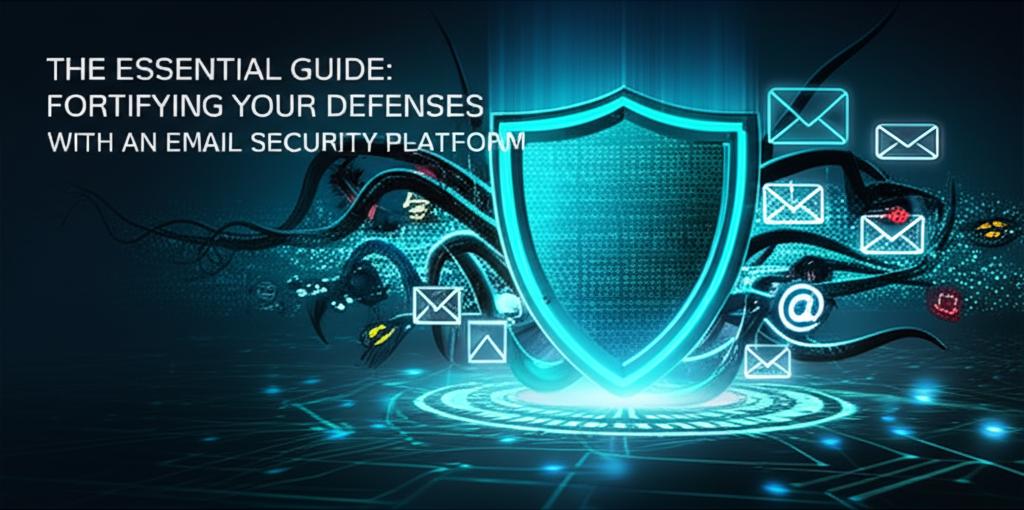The Essential Guide: Fortifying Your Defenses with an Email Security Platform
In today’s interconnected digital landscape, email remains the primary communication channel for businesses worldwide. However, it’s also the most common entry point for cyber threats. This makes understanding and implementing an Email Security Platform not just advisable, but absolutely essential. But what exactly is an Email Security Platform, and why is it so crucial for your organization?
What Exactly is an Email Security Platform?
An Email Security Platform is a comprehensive suite of tools and services designed to protect an organization’s email infrastructure from various cyber threats. It acts as the first line of defense, scrutinizing incoming and outgoing emails to prevent malware, phishing attempts, spam, and other malicious content from reaching users or leaving the network. Essentially, it creates a secure gateway for all email communications.
Key Components and Features of a Robust Email Security Platform
A truly effective Email Security Platform integrates multiple layers of protection. Here are its core components:
- Advanced Spam Filtering: Utilizes AI and machine learning to detect and block unsolicited and unwanted emails, significantly reducing inbox clutter and the risk of spam-borne threats.
- Phishing and Spear-Phishing Protection: Identifies and quarantines emails designed to trick users into revealing sensitive information, often employing sophisticated URL and attachment analysis.
- Malware and Ransomware Defense: Scans email attachments and links for malicious code, preventing viruses, ransomware, and other forms of malware from infiltrating the network. This often includes sandboxing technology to execute suspicious files in a safe environment.
- Data Loss Prevention (DLP): Monitors outbound emails for sensitive information (e.g., credit card numbers, PII, intellectual property) to prevent accidental or intentional data leaks.
- Email Encryption: Ensures that sensitive email communications are encrypted both in transit and at rest, protecting data confidentiality and integrity.
- Threat Intelligence: Leverages global threat databases and real-time intelligence feeds to identify emerging threats and proactively block them.
- Authentication Protocols (DMARC, SPF, DKIM): Verifies the sender’s identity to prevent email spoofing and ensure legitimate emails reach their destination.
- User Awareness Training Integration: Many platforms offer or integrate with tools to educate users about common threats, turning them into a strong line of defense.
How Does an Email Security Platform Work?
At its core, an Email Security Platform operates by intercepting emails before they reach their intended recipients (for inbound) or before they leave the organization (for outbound). It performs a series of checks and analyses:
- Pre-delivery Scanning: Emails are scanned for known malicious signatures, spam indicators, and sender reputation.
- Content Analysis: Advanced algorithms analyze email content, links, and attachments for suspicious patterns, behavioral anomalies, and zero-day threats.
- Policy Enforcement: The platform applies predefined security policies, such as DLP rules or encryption requirements.
- Quarantine and Reporting: Suspicious emails are quarantined for administrator review, and detailed reports are generated to track threats and system performance.
Why Is an Email Security Platform Indispensable for Modern Businesses?
The reliance on email for business operations makes it a prime target for cybercriminals. An Email Security Platform is not just a luxury; it’s a fundamental requirement for several reasons:
- Mitigate Cyber Risks: Drastically reduces the likelihood of successful phishing attacks, malware infections, and data breaches.
- Ensure Business Continuity: Prevents email system downtime caused by attacks, allowing operations to continue uninterrupted.
- Protect Sensitive Data: Safeguards confidential information, intellectual property, and customer data from exposure.
- Maintain Regulatory Compliance: Helps organizations meet stringent data protection regulations (e.g., GDPR, HIPAA) by securing email communications.
- Enhance User Productivity: Filters out spam and malicious emails, allowing employees to focus on productive work without distractions or security concerns.
Choosing the Right Email Security Platform
Selecting the ideal Email Security Platform involves assessing your organization’s specific needs, threat landscape, and budget. Consider factors such as scalability, integration capabilities, ease of management, and the vendor’s reputation for innovation and support.
Conclusion
An Email Security Platform is more than just a filter; it’s a strategic investment in your organization’s resilience and security posture. By providing robust protection against an ever-evolving array of email-borne threats, it allows businesses to communicate confidently and securely, safeguarding their data, reputation, and bottom line in the digital age.







